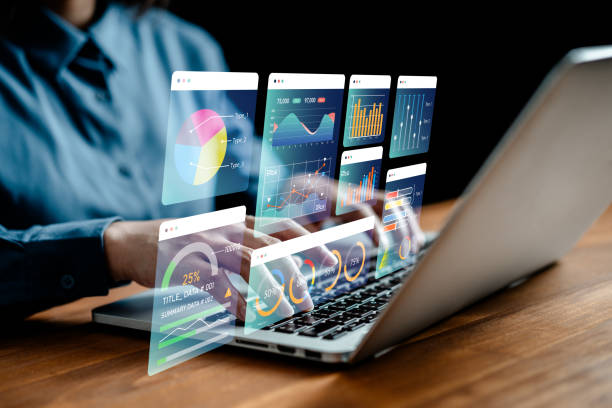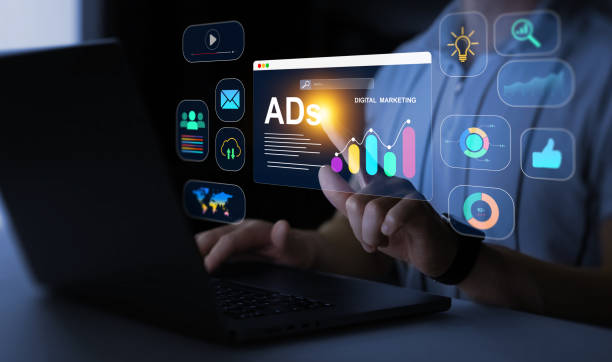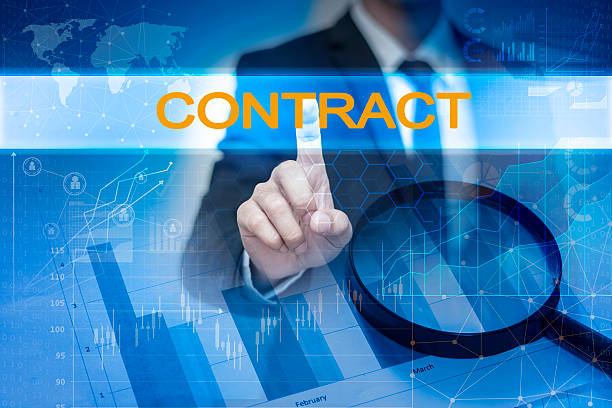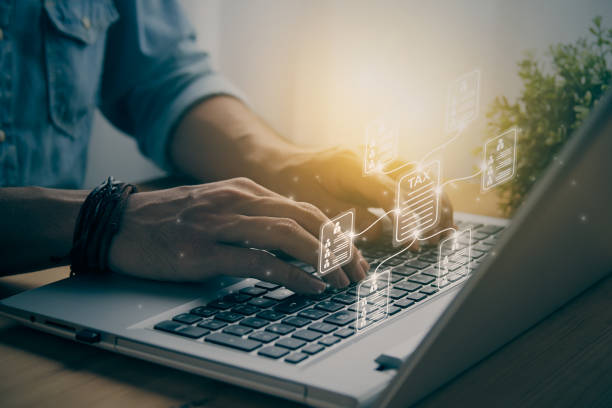What is On-Page SEO and why is it important?

What is On-Page SEO and Why is it Important?
#On-Page SEO refers to a set of techniques and actions performed within a website to improve its ranking in search engine results like Google.
These techniques include optimizing content, site structure, HTML tags, and other internal website elements.
On-Page SEO is crucial for search engines because it helps them better understand the site’s content and present it to relevant users.
In other words, with proper On-Page SEO, you help search engines understand what your site is about and what value it offers to users.
This directly impacts your site’s ranking, causing it to appear higher in search results.
The importance of On-Page SEO in a website’s success is undeniable.
Without a strong On-Page SEO strategy, even the best and highest-quality content may go unnoticed.
On-Page SEO helps your website rank for relevant keywords, attract more organic traffic, and ultimately lead to increased sales and revenue.
On-Page SEO is a long-term investment that yields significant returns.
Improving On-Page SEO also means improving user experience, as a better site that is understandable and usable for users is more likely to convert them into customers.
Therefore, On-Page SEO is crucial not only for search engines but also for users.
In summary, On-Page SEO encompasses all efforts you make to optimize your website so that search engines and users can easily find and use your content.
This process helps you improve your site’s ranking, attract more organic traffic, and ultimately achieve your business goals.
Google has complex algorithms that seek high-quality and relevant websites, and On-Page SEO plays a vital role in demonstrating these qualities to Google.
On-Page SEO should be considered a fundamental part of your online marketing strategy.
On-Page SEO helps your business grow.
Does your company’s website perform as well as your brand deserves? In today’s competitive world, your website is your most important online tool. RasaWeb, a specialist in professional corporate website design, helps you to:
✅ Build customer credibility and trust
✅ Convert website visitors into customers
⚡ Get a free consultation!
Keyword Research and Choosing the Best Words

Keyword Research and Choosing the Best Words
Keyword research is one of the most crucial steps in On-Page SEO.
Keywords are the words and phrases that users utilize to search on search engines.
The goal of keyword research is to identify words that attract the most traffic to your website and are relevant to your content.
Keyword research helps you understand what users are looking for and how you can optimize your content to meet their needs.
To start keyword research, you can use various tools such as Ahrefs, SEMrush, Ubersuggest, and Google Keyword Planner.
These tools provide you with information about search volume, competition, and related keywords.
Also, you can use other methods such as analyzing competitor keywords, common user queries, and free tools like Google Trends.
After identifying relevant keywords, you should prioritize them based on criteria such as search volume, competition, and content relevance.
Keywords with high search volume and low competition are usually the best options.
After selecting keywords, you should strategically use them in your content.
This includes using keywords in titles, meta descriptions, body text, images, and links.
However, you should avoid excessive use of keywords (keyword stuffing), as this can lead to penalties from search engines.
The goal is for your content to be natural and valuable, with keywords naturally embedded within it.
The correct selection of keywords significantly impacts On-Page SEO and can contribute to improving your site’s ranking.
Long-tail keywords can also help you attract more traffic.
Optimizing Titles and Meta Descriptions

Optimizing Titles and Meta Descriptions
Title Tags and Meta Descriptions are important elements in On-Page SEO that help search engines and users understand what your page is about.
Titles are displayed at the top of the browser window and appear as the main link in search results.
Meta descriptions are also a summary of the page’s content, displayed below the title in search results.
Optimizing titles and meta descriptions helps you improve your page’s ranking, increase click-through rate (CTR), and attract more traffic.
To optimize titles, you should use relevant keywords, write an attractive and descriptive title, and keep the title length under 60 characters so it displays fully in search results.
The title should accurately reflect the page’s content and give users a reason to click.
Also, each page’s title should be unique to prevent issues related to duplicate content.
To optimize meta descriptions, you should write an engaging and concise summary of the page’s content, use relevant keywords, and keep the description length between 150 and 160 characters.
Meta descriptions should give users a reason to visit your page and encourage them to click.
Like titles, meta descriptions should also be unique, and you should avoid repeating them across different pages.
In On-Page SEO, these two items are among the most important to consider.
Furthermore, you can use various structures in titles and meta descriptions to enhance their appeal.
For example, you can use numbers, questions, punctuation, and powerful words to capture users’ attention.
You can also use Call to Action (CTA) in meta descriptions to encourage users to perform a specific action like buying, registering, or downloading.
Overall, optimizing titles and meta descriptions requires attention to detail and continuous testing.
By experimenting with different titles and descriptions, you can find the best combination and improve your pages’ performance.
Optimizing titles and meta descriptions can greatly help your On-Page SEO.
| Element | Description | Best Practice |
|---|---|---|
| Page Title | Title displayed in search results | Use main keyword, less than 60 characters |
| Meta Description | Summary of page content | Use relevant keywords, between 150-160 characters |
Content Optimization for Search Engines and Users

Content Optimization for Search Engines and Users
Content is king! This famous phrase in the SEO world clearly demonstrates the importance of content.
High-quality and relevant content is not only valuable to users but also helps search engines better understand your page and show it to relevant users.
Optimizing content for search engines and users means creating content that is both understandable for search engines and engaging and useful for users.
To optimize content, you should use relevant keywords, organize content regularly and structurally, use images and videos to make content more appealing, and continuously update content.
Using keywords in titles, subtitles, body text, and image descriptions helps search engines better understand the topic of your page.
However, you should avoid excessive use of keywords and try to write your content naturally and smoothly.
Divide your content into smaller sections and use subheadings to organize it.
This makes it easier for users to browse your content and find the information they need.
Using images and videos can make your content more engaging and interactive.
Images and videos should be relevant to the page’s content and help users better understand the topic.
In On-Page SEO, paying attention to content quality is very important.
Continuously update your content to provide new and relevant information to users.
Updated content shows that you care about your users and strive to provide the best user experience for them.
Additionally, you can use internal and external links to improve content SEO.
Internal links help users access other related pages on your website, while external links to reputable and relevant websites help increase the credibility of your content.
Overall, content optimization requires attention to detail and continuous effort.
By creating high-quality and relevant content, you can improve your page’s ranking, attract more traffic, and ultimately achieve your business goals.
Content should be up-to-date and relevant to play a positive role in On-Page SEO.
Tired of losing business opportunities due to not having a professional corporate website? Don’t worry anymore! With RasaWeb’s corporate website design services:
✅ Your brand’s credibility and professionalism will increase.
✅ You will attract more customers and sales leads.
⚡ Get a free consultation to start now!
Optimizing Images and Videos

Optimizing Images and Videos
Images and videos play a crucial role in website attractiveness and engagement, but if not properly optimized, they can negatively impact site SEO.
Optimizing images and videos means reducing file sizes, using appropriate file names, adding Alt Text for images, and using Schema Markup for videos.
Reducing file sizes is one of the most important steps in optimizing images and videos.
Large files can decrease page loading speed and cause users to leave your site.
To reduce file sizes, you can use image compression tools like TinyPNG and Compress JPEG for images, and video compression tools like HandBrake for videos.
Additionally, you can use optimized image and video formats such as WebP and MP4.
Using appropriate file names is also important.
File names should be descriptive and relevant to the image or video content, and include relevant keywords in the file names.
For example, instead of “IMG_1234.jpg,” use “on-page-seo-tutorial.jpg.”
Adding Alt Text for images helps search engines understand the image content.
Alt Text should be descriptive and relevant to the image content, and include relevant keywords.
Furthermore, Alt Text is beneficial for users who use screen readers.
Image optimization plays an important role in On-Page SEO.
Using Schema Markup for videos helps search engines gain more information about your video and highlight it in search results.
Schema Markup includes information such as video title, video description, video thumbnail, and video duration.
You can use Schema Markup Generator tools to create Schema Markup code for your videos.
Overall, optimizing images and videos requires attention to detail and the use of appropriate tools.
By optimizing images and videos, you can improve page loading speed, increase your site’s ranking, and provide a better user experience for users.
Site speed is one of the important factors in On-Page SEO.
Always optimize images and videos to get a better ranking in search results.
Improving Site Structure and Internal Linking

Improving Site Structure and Internal Linking
Site structure and internal linking play a significant role in SEO and user experience.
A well-organized and logical site structure helps search engines easily find and index your site’s pages, while internal linking helps users access other relevant pages on your website.
Improving site structure and internal linking helps you boost your site’s ranking, attract more traffic, and reduce the bounce rate.
To improve site structure, you should create a hierarchical, tree-like structure where more important pages are at the top of the tree and less important pages are at the bottom.
Use a navigation menu to guide users to the main pages of the site and use breadcrumb links to show users their path within the site.
Also, you should use descriptive and SEO-friendly URLs that include relevant keywords and are easily understandable.
For internal linking, you should strategically create links between related pages.
Internal links should be naturally embedded in the text, and use descriptive and relevant anchor text.
Do not overlook linking to important and strategic pages of your site, and try to continuously update internal links.
Internal linking greatly helps On-Page SEO.
Furthermore, you can use sitemap tools to help search engines index your site’s pages.
A sitemap is an XML file that contains a list of all your site’s pages and helps search engines easily find new and updated pages.
You can also use website analysis tools like Google Analytics to identify pages with high bounce rates and improve their content and structure.
Overall, improving site structure and internal linking requires careful planning and execution.
By creating a well-organized and logical site structure and strategic internal linking, you can enhance your site’s SEO and provide a better user experience for users.
These factors have a significant impact on On-Page SEO.
| Factor | Description | Benefits |
|---|---|---|
| Site Structure | Organizing pages in a logical and hierarchical manner | Improved indexing, better user experience |
| Internal Linking | Creating links between related pages on the site | Increased page ranking, reduced bounce rate |
Optimizing Page Loading Speed

Optimizing Page Loading Speed
Page loading speed is one of the important factors in SEO and user experience.
Pages that load quickly provide a better user experience and are more likely to retain users on your site and encourage interaction with your content.
Moreover, Google considers page loading speed as a ranking factor, and pages with higher loading speeds achieve better rankings in search results.
Optimizing page loading speed helps you improve your site’s ranking, attract more traffic, and increase the conversion rate.
To optimize page loading speed, you can use various methods such as image compression, enabling Gzip compression, using Content Delivery Networks (CDNs), reducing CSS and JavaScript file sizes, and using caching.
Image compression means reducing the size of image files without compromising quality.
You can use image compression tools like TinyPNG and Compress JPEG for images.
Enabling Gzip compression means compressing HTML, CSS, and JavaScript files before sending them to the browser.
This reduces file sizes and increases page loading speed.
Using Content Delivery Networks (CDNs) means storing your site’s files on various servers worldwide.
When a user from a specific geographical location accesses your site, the files are delivered from the closest CDN server to the user.
This increases page loading speed for users globally.
Optimizing site speed is very important in On-Page SEO.
Reducing the size of CSS and JavaScript files means removing extra and unnecessary code from these files.
You can use Minification tools to reduce the size of CSS and JavaScript files.
Using caching means storing your site’s files in the user’s browser cache.
When a user first accesses your site, the site’s files are stored in their browser’s cache.
On subsequent visits, the files are loaded from the browser cache, eliminating the need to re-download from the server.
This significantly increases page loading speed for users who have previously visited your site.
To test your site’s speed, you can use tools like Google PageSpeed Insights and GTmetrix.
These tools provide you with information about your page loading speed and offer suggestions for improvement.
On-Page SEO helps improve site speed.
Mobile Optimization

Mobile Optimization
Given the increasing use of mobile devices for internet searches, optimizing websites for mobile is of particular importance.
Since 2015, Google introduced the Mobile-First Indexing algorithm, where the mobile version of your website is considered the primary version for indexing and ranking.
Mobile optimization helps you improve your site’s ranking in mobile search results, attract more traffic, and provide a better user experience for mobile users.
Mobile-friendly websites have a better ranking in On-Page SEO.
To optimize for mobile, you should use Responsive Design.
Responsive design means that your website automatically adapts to the screen size of the user’s device.
This ensures that users can easily use your website on any device.
Also, you should use readable fonts and appropriate font sizes so that users can easily read the text on mobile devices.
Buttons and links should be large enough for users to easily tap them.
Use optimized images and videos to avoid reducing page loading speed on mobile devices.
Using AMP (Accelerated Mobile Pages) can also help improve page loading speed on mobile devices.
AMP is an open-source framework that helps you make your mobile pages faster and lighter.
On-Page SEO helps optimize the site for mobile.
Additionally, you should test your website on various mobile devices to ensure its proper functioning.
You can use mobile testing tools like Google Mobile-Friendly Test to check your website’s compatibility with mobile devices.
Also, you can use Google Analytics to analyze the behavior of mobile users on your website and identify and address weaknesses.
Overall, mobile optimization requires attention to detail and continuous testing.
By optimizing your website for mobile, you can provide a better user experience for mobile users and improve your site’s ranking in mobile search results.
Responsive design is one of the most important factors in On-Page SEO.
Does your current corporate website not reflect your brand’s credibility and power as it should? RasaWeb solves this challenge for you with professional corporate website design.
✅ Increase visitor credibility and trust
✅ Attract more targeted customers
⚡ Click here for a free consultation!
Checking and Fixing Technical Site Errors

Checking and Fixing Technical Site Errors
Technical site errors can negatively impact SEO and user experience.
Errors such as 404 pages, broken links, incorrect redirects, and indexing issues can prevent search engines from correctly finding and indexing your site’s pages.
Additionally, technical errors can cause users to leave your site and increase the bounce rate.
Checking and fixing technical site errors helps you improve your site’s ranking, attract more traffic, and provide a better user experience for users.
Fixing site errors is very important in On-Page SEO.
To check and fix technical site errors, you can use various tools such as Google Search Console, Ahrefs Webmaster Tools, and Screaming Frog SEO Spider.
Google Search Console is a free tool that provides you with information about indexing errors, security issues, and your site’s performance in search results.
Ahrefs Webmaster Tools is a free tool that provides you with information about broken links, incorrect redirects, and other technical site errors.
Screaming Frog SEO Spider is a paid tool that allows you to scan your site and identify all technical errors.
After identifying technical errors, you must resolve them.
To fix 404 pages, you can use a 301 redirect to relevant pages or create a custom 404 page that helps users access other pages on the site.
To fix broken links, you should update them or remove them.
To fix incorrect redirects, you should correct the redirects to guide users to the correct page.
Broken links and incorrect redirects negatively impact On-Page SEO.
Furthermore, you should ensure that your site has a correct robots.txt file that allows search engines to index your desired pages.
Also, you should ensure that your site has an XML sitemap that helps search engines easily find all pages of your site.
Overall, checking and fixing technical site errors is a continuous process that requires attention to detail and the use of appropriate tools.
By checking and fixing technical site errors, you can improve your site’s SEO and provide a better user experience for users.
Technical errors can have a negative impact on On-Page SEO.
Measuring and Analyzing On-Page SEO Results

Measuring and Analyzing On-Page SEO Results
Measuring and analyzing On-Page SEO results is essential for evaluating the effectiveness of your SEO strategy and identifying opportunities for improvement.
Without measurement and analysis, you cannot understand whether your efforts are moving in the right direction.
Measuring and analyzing On-Page SEO results helps you track your site’s ranking in search results, measure organic traffic, evaluate conversion rates, and identify the strengths and weaknesses of your SEO strategy.
To measure and analyze On-Page SEO results, you can use various tools such as Google Analytics, Google Search Console, and Rank Tracker tools.
Google Analytics is a free tool that provides you with information about your site’s traffic, user behavior, and conversion rates.
You can use Google Analytics to measure organic traffic, bounce rate, time on page, and other important metrics.
Google Search Console is a free tool that provides you with information about your site’s performance in search results, the keywords users use to access your site, and indexing errors.
You can use Google Search Console to track your site’s ranking for various keywords, identify indexing issues, and evaluate CTR (Click-Through Rate).
Keyword tracking has a significant impact on On-Page SEO.
Rank Tracker tools allow you to track your site’s ranking for different keywords over time.
These tools help you understand whether your SEO efforts have improved your site’s ranking.
After collecting data, you should analyze it and interpret the results.
Look for patterns and trends and try to understand what factors have contributed to the success or failure of your SEO strategy.
Based on the analysis results, you should update your SEO strategy and implement the necessary changes.
For example, if you notice that your site’s ranking for a specific keyword has decreased, you should update the content of the relevant page or add more internal links to it.
Overall, measuring and analyzing On-Page SEO results is a continuous process that requires attention to detail and the use of appropriate tools.
By measuring and analyzing On-Page SEO results, you can optimize your SEO strategy and achieve better results.
Measurement and analysis of results are very important for success in On-Page SEO.
Frequently Asked Questions
| Row | Question | Answer |
|---|---|---|
| 1 | What is On-Page SEO? | On-Page SEO refers to a set of actions performed within a website (on its pages) to improve its ranking in search engine results. This includes optimizing content, site structure, and HTML codes. |
| 2 | Why is On-Page SEO important? | On-Page SEO helps search engines better understand the page content and determine if the page is relevant and valuable for user queries. This better understanding leads to higher rankings. |
| 3 | What is the first and most important step in On-Page SEO? | Keyword Research is the most important initial step. By finding appropriate keywords, targeted content relevant to user needs can be produced. |
| 4 | What is the role of the Title Tag in On-Page SEO? | The title tag is one of the most important ranking factors and should include the main keyword. This tag is displayed as the page title in search results and affects the click-through rate (CTR). |
| 5 | What is the importance of the Meta Description? | The meta description does not directly affect ranking, but by providing an attractive summary of the page content in search results, it can encourage users to click and thus increase the click-through rate (CTR). |
| 6 | Why is using headings (H1, H2, etc.) important in content? | Headings help structure the content and improve readability for users and search engine crawlers. Using keywords in headings also helps search engines better understand the topic. |
| 7 | What does Image Optimization in On-Page SEO include? | It includes compressing images to reduce size, using descriptive and relevant file names, and filling the Alt tag (alternative text) with relevant keywords to help search engines understand the image content. |
| 8 | What is Internal Linking in On-Page SEO? | Internal linking refers to creating links between different pages of a website. This helps distribute page authority (Link Equity), improve user experience, and assist search engine crawlers in discovering new pages. |
| 9 | Why is Page Speed important for On-Page SEO? | Page loading speed is a direct ranking factor and significantly impacts user experience. Slow pages can lead to an increased bounce rate (Bounce Rate) and reduced user engagement. |
| 10 | What role does quality content play in On-Page SEO? | High-quality, comprehensive, unique, and valuable content for the user is the core of On-Page SEO. This content not only attracts and retains users but also sends positive signals to search engines and contributes to better rankings. |
And other services of RasaWeb advertising agency in the field of advertising
- Smart UI/UX: A new service to increase online growth through SEO-driven content strategy.
- Smart Advertising Campaign: A new service to increase website visits through key page optimization.
- Smart Advertising Campaign: An effective tool for digital branding with the help of marketing automation.
- Smart Link Building: A combination of creativity and technology to increase click-through rates through custom programming.
- Smart Content Strategy: Designed for businesses seeking campaign management through attractive UI design.
And over hundreds of other services in the field of internet advertising, advertising consultation, and organizational solutions
Internet Advertising | Advertising Strategy | Advertorials
Resources
Comprehensive On-Page SEO Checklist for Websites
Content Optimization for On-Page SEO
The Importance of Internal Linking in SEO
Technical On-Page SEO Tips for Ranking Improvement
? Is your business ready to leap into the digital world? RasaWeb Afarin Digital Marketing Agency, specializing in Fast Website Design, SEO, and comprehensive online marketing strategies, paves the way for your brand’s growth.
For a free consultation and more information about our services, which guarantee your online success, contact RasaWeb Afarin’s expert team today.
📍 Tehran, Mirdamad Street, next to Bank Markazi, Southern Kazerun Alley, Ramin Alley, No. 6




